Next week Lamont Doherty’s Secondary School Field Research Program (SSFRP) begins and a horde of over 20 high school students will be falling head over heals in love with marsh science and fieldwork. The program brings together Lamont scientists, undergraduate students, graduate students, and high school teachers and students to monitor and study the physical and biological life of Piermont Marsh. There are teams lead by undergraduates and teachers that focus on subjects including fish, plants, nutrients, carbon, and marsh elevation. I have the privilege of leading a team of my own to help with my project focusing on competition and allelopathy in the invasive plant species Phragmites australis.
Since the beginning of June I have been getting my project up and running. My first task was to figure out how to get out to my site, which is located on an oxbow island at the end of the Crumbkill creek in the middle of Piermont Marsh. After discovering that walking was out of the question I purchased some heavy-duty inflatable boats and ventured down the creek to the oxbow. After wandering around the island, through dense stands of still standing dead Phragmites mixed in with new growth, I marked off a 10m by 10m square to call my site. Over the next week or so I clipped all the Phragmites down to the peat, leaving an open square plot.
Once the plot was cleared I began installing pots into the peat. This entails digging out a hole and collecting the removed peat, fitting a 3-gallon pot into the hole, and placing the peat into the pot while removing rhizomes and large roots. There will be 10 rows of 10 pots for a total of 100 and they are all 1 meter apart. So far I have installed 70 pots. I have also started to plant Phragmites (small successional individuals taken from the cleared plot) into randomly assigned pots.
Our team should be able to finish installing the pots within the next week and then we will begin adding the activated charcoal to half of the pots and planting the native Spartina alterniflora and Spartina patens, which I have received from the Greenbelt Native Plant Nursery in Staten Island. We will then monitor the growth of the plants for several weeks and take soil samples to analyze for gallic acid (a known Phragmites allelochemical) before extracting the plants to be processed for above and belowground biomass.
While the process has taken longer than I expected due to vehicle troubles, poor weather conditions, waiting on deliveries, and me being one person, I am happy the project is progressing and very excited to work with the students starting next week! It has also been a delight to go out on the marsh almost every day over the past month. I have seen many birds (swallows, red-winged blackbirds, herons, and ducks), mammals (deer, muskrats, and a woodchuck), snapping turtles, snakes, and many brood II cicadas! It is quite the experience to start the day riding the subway with hundreds of other people and then an hour later to be alone in a creek surrounded by dense vegetation and vibrant wildlife. I cannot wait to share that experience with my fellow young scientists!

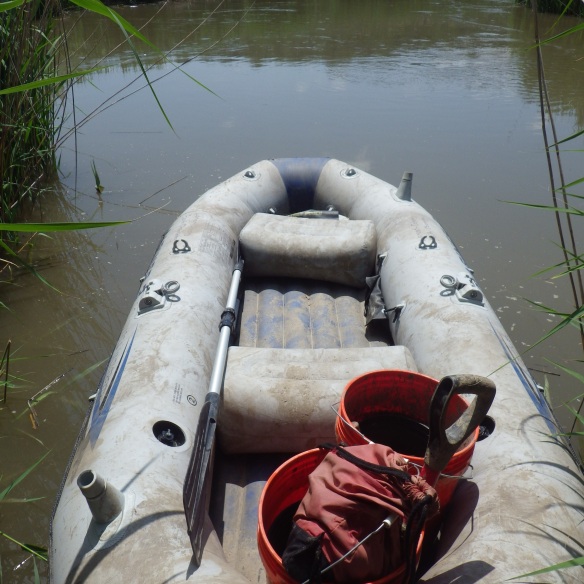
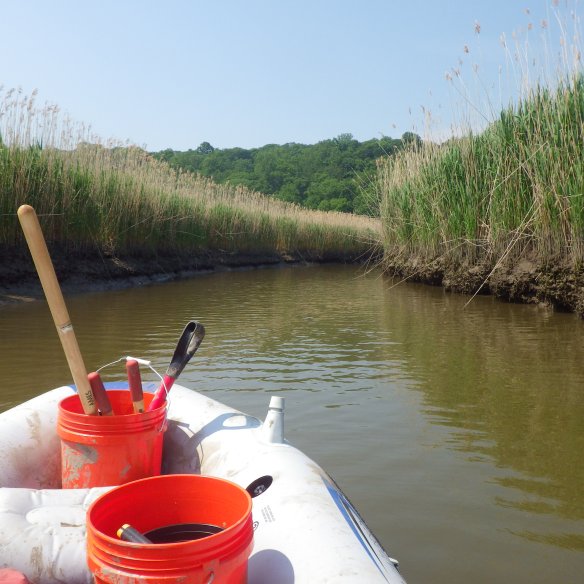
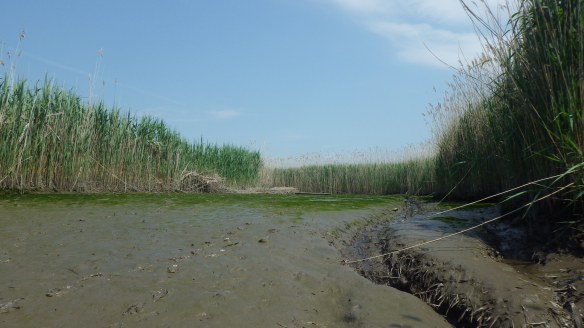
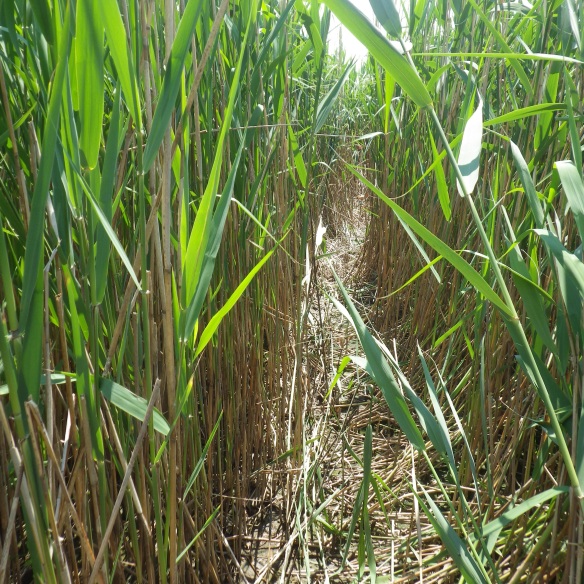
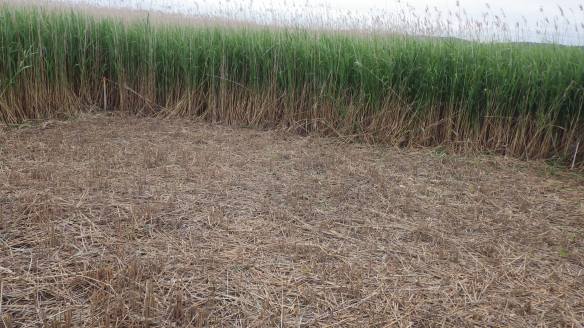
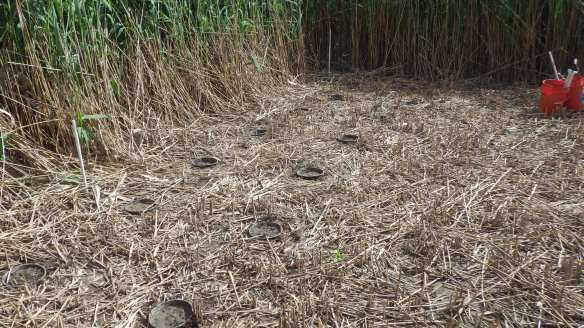
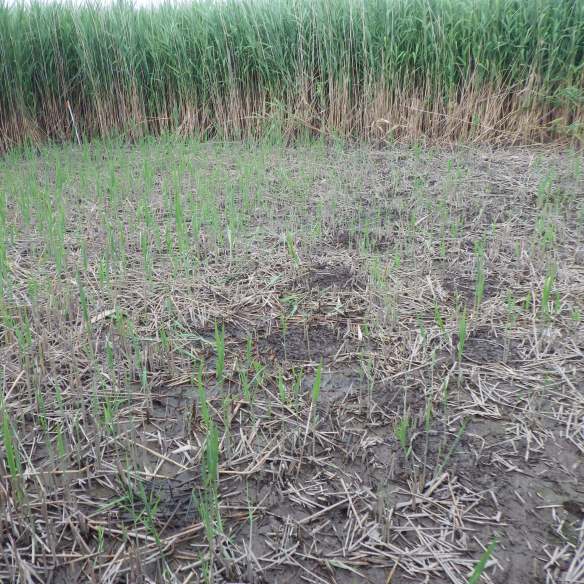
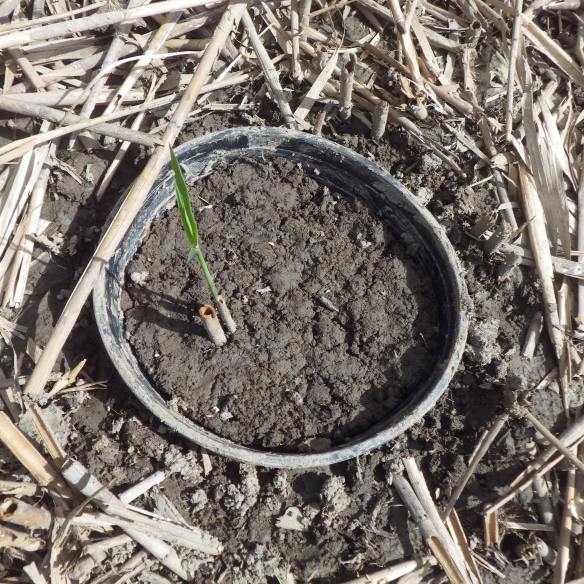
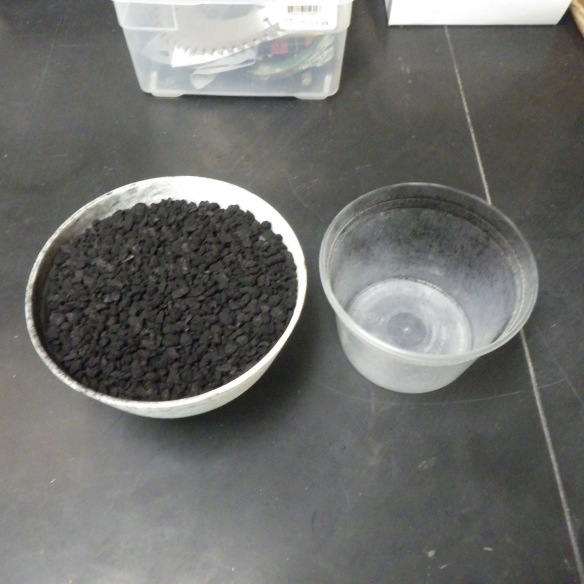
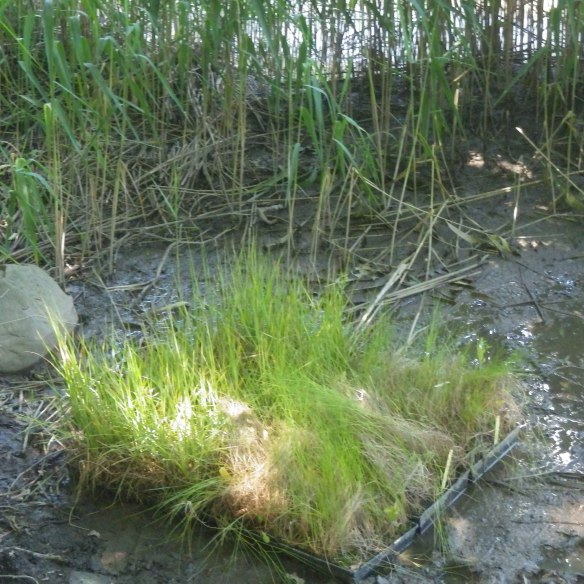
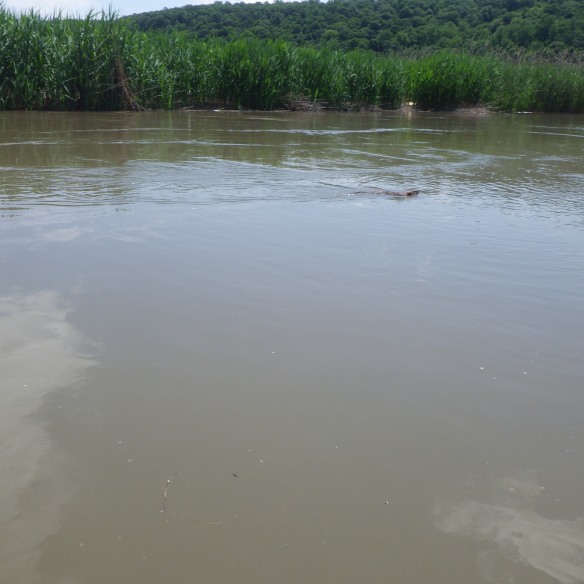
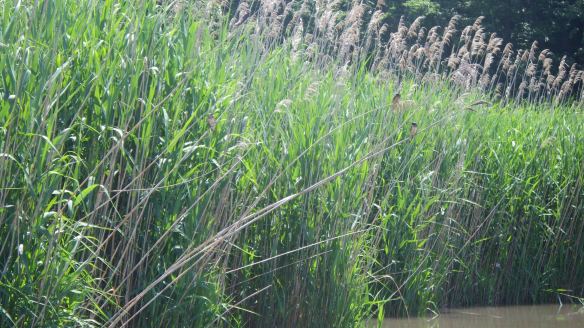
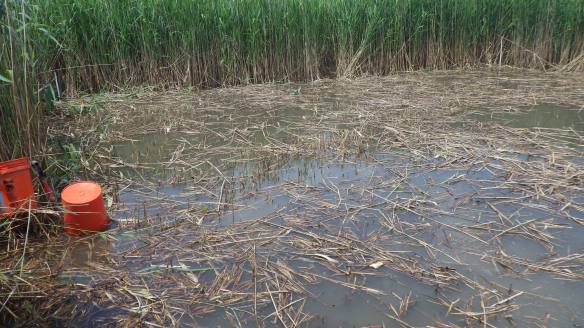
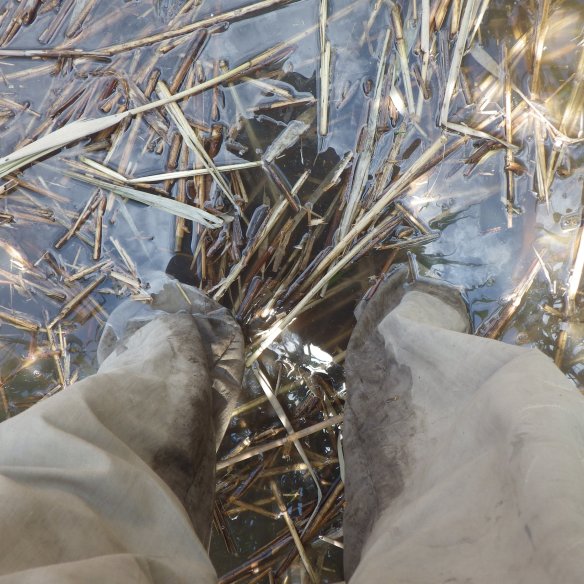
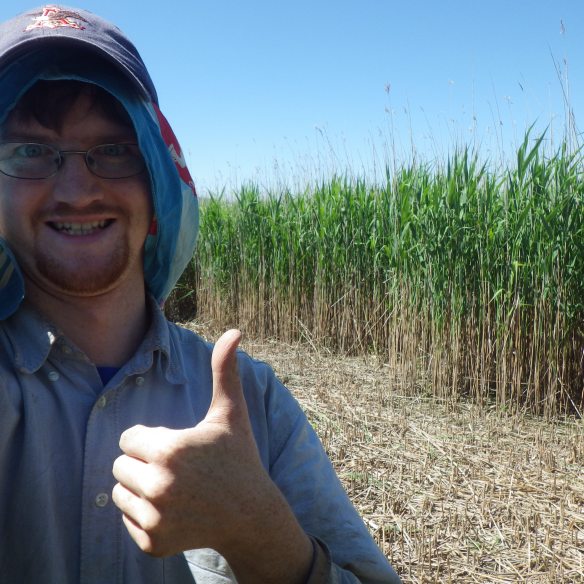
Really interesting project. Raises many questions. The Spartina alterniflora thrives on being salted twice a day with the tide, but that doesn’t happen in this marsh, does it? Also, are both native and invasive phrag still considered the same species? How does one tell the difference between them? Are there any strands of the native species in the Hudson/NYC area? Do they interbreed, or whatever the botanical word is? It’s also my understanding that phrag is disappearing from its native Europe, which sort of parallels the case of the house sparrow, doing great here, but dwindling where it evolved. Have these invasives in fact evolved away from their native sources/types?
Thanks for the comment!
The Spartina alterniflora in my pots are not inundated with each high tide as you said. The plants that I am using are the short form Spartina alterniflora that are found on the high marsh surface, which is usually only flooded during the very high spring tides that flood the high marsh. The tall form is what gets flooded with each tide. The native and invasive Phragmites australis are the same species just different genotypes, so you can distinguish them by determining their distinct haplotypes. I do not know for certain if there are native strands of Phragmites in the area. Anecdotally, most wetlands around here where Phragmites is present have large monotypic stands that are not limited to the upland portion of the system like you would see with the native form. I have not read about any crossover between the different forms, I think the case is usually that the invasive form will enter an area inhabited by the native form and push them out. Your final question is very interesting. I am not sure how the invasive form of Phragmites has evolved since its arrival in North America around 200 years ago. Perhaps its proliferation in the US could serve as a boon for the European species and its revitalization.
Thanks! I sometimes pass the marsh on the river side; will look for you out there.